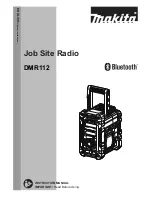
5
FCC NOTICE TO USERS
The system may cause interference to a TV or radio even when it is operating properly. To determine
whether the system is causing the interference, turn it off. If the interference goes away, the system is
causing the interference. This equipment has been tested and found to comply with the limits for a Class B
digital device, pursuant to Part 15 of the FCC Rules. These limits are designed to provide reasonable
protection against harmful interference in a residential installation.
This equipment generates, uses and can radiate radio frequency energy and, if not installed and used in
accordance with the instructions, may cause harmful interference to radio communications. However, there
is no guarantee that interference will not occur in a particular installation. If this equipment does cause
harmful interference to radio or television reception, which can be determined by turning the equipment off
and on, the user is encouraged to try to correct the interference by one or more of the following measures:
• Reorient or relocate the receiving antenna.
• Increase the separation between the equipment and receiver.
• Connect the equipment into an outlet on a circuit different from that to which the receiver is needed.
• Contact your dealer for help.
This device complies with Part 15 of the FCC Rules. Operation is subject to the following two conditions:
1. This device may not cause harmful interference.
2. This device must accept any interference received, including interference that may cause undesired
operation.
WARNING
: changes or modifications to this unit not expressly approved by the party responsible
for compliance could void the user’s authority to operate the equipment
IMPORTANT!
Clear voice reception is important, but does not guarantee that an emergency alert will trigger your unit’s
alert siren. To test actual reception and alert response, your unit must receive a test or emergency alert
signal broadcast. The National Weather Service (NWS) broadcasts a test alert every week typically on
Wednesday between 11AM and 12PM (noon). The radio will warn you if it has not received an alert within
10 days.To find out the specific test schedule in your area, contact your local National Oceanic and
Atmospheric Administration (NOAA) or National Weather Service (NWS) office - 1-898-697-7263. These
offices are usually listed in the telephone book under “US Government” or visit the NOAA website at
http://www.nws.noaa.gov/nwr/
REMEMBER – FOR YOUR SYSTEM TO BE EFFECTIVE, YOU MUST PLACE IT WHERE IT CAN
RECEIVE AN EMERGENCY ALERT SIGNAL AND WHERE YOU CAN HEAR ITS ALERT SIREN OR SEE
ITS FLASHING LIGHTS.






































